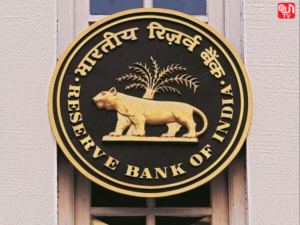RBI and its monetary policy for 2019: Important Facts
Important facts about RBI & its monetary policy for 2019
This article aims to delve into the monetary policy of the Reserve Bank of India for the fiscal year of 2019-2020 from the perspective of the SSC CGL/CHSL and Banking examinations.

Monetary Policy:
A monetary policy is a policy formulated by the central bank (RBI) which aims at regulating the supply of money, availability, and cost of credit in the economy.
The policy aims to oversee the distribution of credit by controlling the rates of lending and borrowing in the country which are significant in promoting economic growth.
The various instruments through which the central bank controls credit and money supply in our economy are:
Read more: Demonetization – Important Facts & Highlights
Read more: Important International Summits and Visits in 2019
Repo Rate:
When the RBI provides a loan to commercial banks for tenure less than 90 days. It charges an interest rate which is called repo rate.
Reverse Repo Rate:
When a bank’s deposit excess money to the RBI, the RBI gives them interest on the money which is the Reverse Repo Rate.
Statutory Liquidity Ratio:
Every bank has to maintain a certain percentage of their total deposits in (Gold + Cash+ bonds+ securities) with themselves. This rate is called the Statutory Liquidity Ratio.
Cash Reserve Ratio (CRR):
Every bank has to maintain a certain percentage of their deposits with the RBI. This rate is called the Cash Reserve Ratio.
Bank Rate:
The rate at which the RBI provides cash loans to commercial banks for a period of more than 90 days.
Margin Requirements:
Margin requirements refer to the difference between the securities offered and the amount of money borrowed by the commercial banks.
Open Market Operations (OMO):
Open market operations refer to the buying and selling of government securities to control the liquidity of money supply in the market.
Current Policy rates – 2019
|
Indicator |
Rate |
|
Cash Reserve Ratio ( CRR) |
4% |
|
Statutory Liquidity Ratio (SLR) |
18.75% |
|
Repo Rate |
5.40% |
|
Reverse Repo Rate |
5.15% |
|
The marginal standing facility rate |
5.65% |
|
Bank Rate |
5.65% |
|
Inflation |
2.86% |
Objectives of the Monetary Policy
Price Stability in the economy
Controlling expansion of bank credit
Promoting Fixed Investment
Restricting product inventories and controlling stock prices
Making the system more efficient
Reducing the rigidity in operations
Monetary Policy Committee:
The Reserve Bank of India (RBI) Act of 1934 was amended in 2016 to create an institutionalized framework for a Monetary Policy Committee which is assigned with the task of formulating policy rates. The Monetary Policy Committee consists of 3 members of the RBI and 3 members appointed by the Central Government.
Flexible Inflation Targeting Framework (FITF)
The FITF was introduced in the amendment of the RBI Act of 1934 in 2016. In accordance with the act, the government sets an Inflation target with prior consultation of the RBI for every 5 years.
For the period of 5th August 2016 – 31st March 2021, the government has set the target for Inflation to be between 2-6%.
Despite controlling the money supply through quantitative measures, the RBI also uses various qualitative measures to control money supply:
a) Margin Requirements: The RBI warrants a certain margin against collateral. When margin requirements are raised, people tend to borrow less.
b) Moral Suasion: The RBI persuades banks to keep money in government securities rather than investing it in other sectors.
c) Selective Credit Control: The RBI controls selective credit by not lending to certain industries or speculative businesses.
Current Updates on the Monetary Policy
RBI has reduced the Repo Rate 4 times this year from 5.75% to 5.40% and the Reverse Repo Rate from 5.50% to 5.15% to increase the liquidity of money supply in the market amidst an economic slowdown.
However, this has had very little effect on the economy as:
· RBI isn’t the primary money supplier to these banks
· Deposits made in the past were taken at a fixed rate and cannot be reduced. Rate cuts will only show once banks take new deposits.
· Banks do not prefer to lower their rates as high lending rates keep the profit margins up.
Conclusion:
The RBI is working actively to increase liquidity and money supply in the economy to improve the GDP which has slowed down to 5% in April – June’19. The Repo Rate has been reduced 4 times by the Monetary Policy Committee this year and other rates are being to meet the demands of the economy.
For more such informative articles stay tuned to OWN TV.
